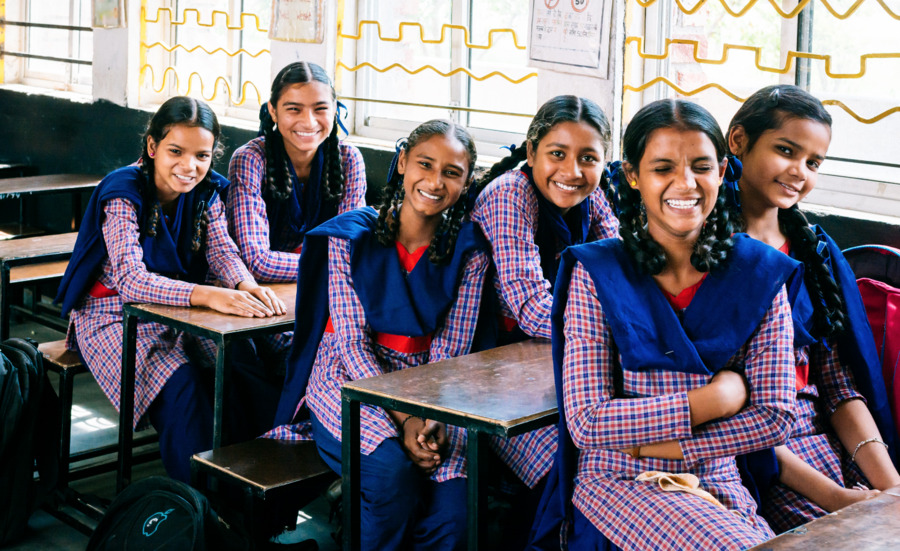
Navigating Indian School Education: Structure, Options, and Cultural Nuances
The Indian school education system is complex and multifaceted, providing a wide array of educational options tailored to various socioeconomic statuses, learning needs, and cultural backgrounds. Spanning from preschool through high school, the international Indian school Ajman educational framework integrates conventional teaching techniques with innovative approaches to foster academic achievement. This article delves into the intricacies of the Indian school system, detailing its organizational stages, languages of instruction, assessment methods, and more, offering a comprehensive overview of its structure.
Early Education: Preschool in India
In India, the educational pathway begins at the tender age of three with preschool enrollment. These initial years are pivotal for children’s development across cognitive, linguistic, social, and motor skills. Preschools in India, commonly known as Pre-K or Play School, prioritize foundational learning in arithmetic, language, and environmental awareness through engaging, play-based activities. Both state-supported and privately-run preschools exist, giving parents a spectrum of options that align with their financial means and educational preferences.
Primary and Middle School Education
Children advance to primary school at six years of age, continuing their education until around 14. This phase is segmented into lower primary (grades 1 to 5) and upper primary (grades 6 to 8), the latter often termed middle school. The curriculum expands significantly during these years to cover a diverse range of subjects including mathematics, science, social studies, and multiple languages. While private schools typically use English as the medium of instruction, government schools may opt for the regional language or Hindi, reflecting the linguistic diversity of the region.

Secondary Education and High School
Upon finishing the 8th grade, students progress to secondary school, which encompasses grades 9 and 10. This period is crucial as students prepare for national board examinations that dictate their eligibility for higher secondary or pre-university education. After successful completion of grade 10, students may pursue a high school diploma through grades 11 and 12, focusing on specific academic and vocational streams such as Science, Commerce, or Arts/Humanities, which influence their future higher education specializations.
Classroom Dynamics and Student Motivation
The typical classroom size in Indian schools can be quite extensive, often containing 60-70 students, especially in economically disadvantaged regions. Such large classes challenge the delivery of personalized education and effective classroom management. To promote a sense of equality and concentration, schools implement uniform policies which help diminish economic disparities among students.
Language, Grading, and Transportation
English frequently serves as the teaching medium in many Indian schools, particularly in the private sector. However, instruction is also provided in Hindi and various regional languages like Bengali, Marathi, Tamil, among others, catering to the country’s linguistic variety. The Indian grading system generally utilizes grades from A to E or numerical scores out of 100. Moreover, many schools arrange transportation for their students, maintaining a fleet of buses that comply with safety protocols to ensure safe travel to and from school.
Cultural Incentives and Holidays
In India, academic excellence often receives public acknowledgment, where top-performing students might see their photographs in local newspapers or displayed on billboards, acting as a powerful incentive for other students. The academic calendar typically includes an extended summer vacation, a shorter winter break, and brief breaks during major festivals like Diwali and Eid, which vary by region.

International Indian School in Ajman
For expatriate Indian families in the UAE, schools like the esteemed International Indian School in Ajman offer an educational program aligned with the Indian schooling system. This arrangement helps maintain educational continuity for children who might return to India in the future. The school’s tuition fees, ranging from 8,000 AED for kindergarten to 12,000 AED for grade 12, reflect the high quality of education it provides.
Summary
The Indian education system encompasses a diverse range of educational pathways that mirror the nation’s socioeconomic, cultural, and linguistic diversity. Despite challenges such as large class sizes, the system is fortified by strong cultural motivators for academic success and a variety of schooling choices. This structure aims to meet the extensive needs of its large student body, providing a solid foundation for their future academic and professional endeavors.
